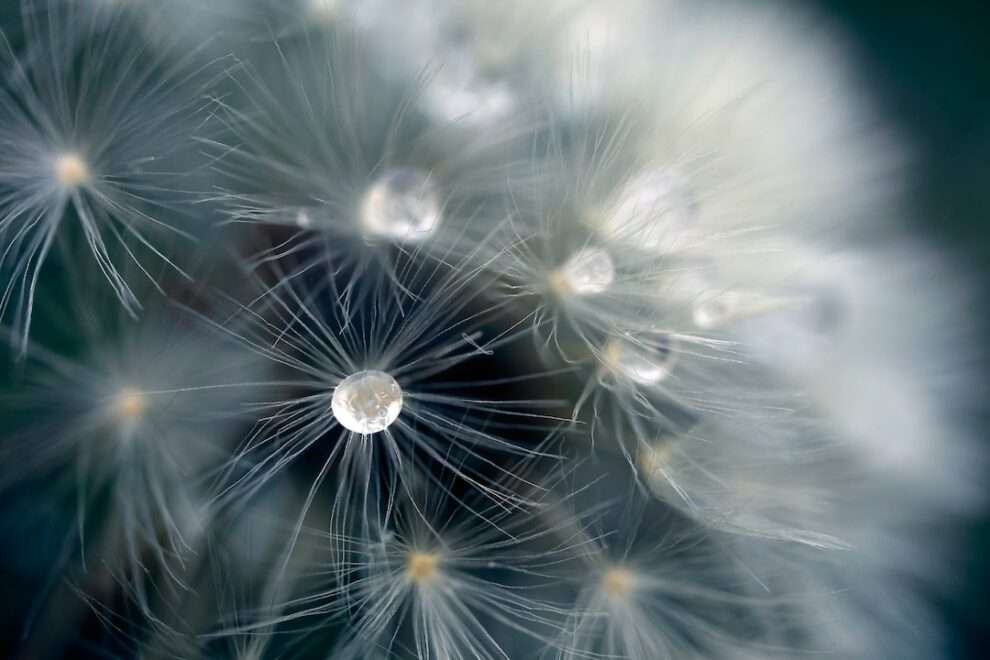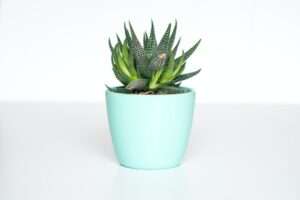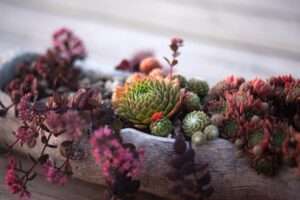Succulents have become increasingly popular in recent years, and it’s no wonder why. These unique plants are known for their ability to store water in their leaves, stems, and roots, making them incredibly resilient and low-maintenance. Succulents come in a wide variety of shapes, sizes, and colors, making them a versatile choice for any home or garden.
Succulents are a type of plant that has adapted to survive in arid environments by storing water in their leaves, stems, and roots. This allows them to withstand long periods of drought and thrive in conditions that would be challenging for other plants. One of the most distinctive characteristics of succulents is their fleshy leaves, which often have a waxy or powdery coating. This coating helps to prevent water loss and protect the plant from the harsh sun.
Understanding the Different Types of Succulents
There are many different types of succulents, each with its own unique characteristics. One common misconception is that all succulents are cacti, but this is not the case. While all cacti are succulents, not all succulents are cacti. Cacti are a specific type of succulent that belong to the family Cactaceae.
Some popular species of succulents include Aloe vera, Echeveria, Sedum, and Haworthia. Aloe vera is known for its medicinal properties and is often used in skincare products. Echeveria is a popular choice for its rosette-shaped leaves and vibrant colors. Sedum is a versatile succulent that comes in many different varieties, from groundcovers to tall upright plants. Haworthia is a small succulent with distinctive striped or spotted leaves.
How to Care for Succulents: Watering and Soil Requirements
Proper watering is essential for the health of succulents. While they are drought-tolerant plants, they still need regular watering to thrive. The key is to water deeply and then allow the soil to dry out completely before watering again. Overwatering is one of the most common mistakes people make when caring for succulents, as it can lead to root rot and other issues.
In addition to proper watering, succulents also require well-draining soil. This is because their roots are prone to rot if they sit in water for too long. A good succulent soil mix should be light and airy, allowing excess water to drain away quickly. You can create your own succulent soil mix by combining equal parts of potting soil, perlite, and coarse sand.
Fertilizing succulents is not always necessary, but it can help promote healthy growth and vibrant colors. Use a balanced fertilizer specifically formulated for succulents, and follow the instructions on the packaging for application rates. Be careful not to over-fertilize, as this can cause damage to the plant.
The Importance of Light and Temperature for Succulent Growth
Light is crucial for the growth and development of succulents. Most succulents thrive in bright, indirect light, although some species can tolerate more shade or direct sunlight. If your succulent is not getting enough light, it may become leggy and stretched out. On the other hand, too much direct sunlight can cause sunburn and damage the leaves.
Temperature also plays a significant role in the health of succulents. Most succulents prefer temperatures between 60-80°F (15-27°C). However, they can tolerate a wide range of temperatures as long as they are not exposed to extreme heat or cold for extended periods. It’s important to protect your succulents from frost during the winter months, as freezing temperatures can cause damage or even kill the plant.
To protect your succulents from extreme temperatures, you can move them indoors during the winter or provide them with some form of insulation. If you choose to bring them indoors, make sure they are placed in a location that receives adequate light. If you leave them outside, cover them with a frost cloth or bring them into a sheltered area.
Propagating Succulents: Methods and Techniques
One of the great things about succulents is that they are relatively easy to propagate, meaning you can create new plants from existing ones. There are several different methods for propagating succulents, including stem cuttings, leaf cuttings, and division.
To propagate succulents through stem cuttings, simply cut off a healthy stem from the parent plant and allow it to dry out for a few days. Once the cut end has calloused over, you can plant it in well-draining soil and water sparingly until roots develop.
Leaf cuttings are another popular method for propagating succulents. Gently remove a leaf from the parent plant, making sure to include the entire leaf, including the base. Allow the leaf to dry out for a few days until a callus forms on the cut end. Then, place the leaf on top of well-draining soil and mist lightly with water. After a few weeks, roots should start to develop, and a new plant will begin to grow.
Common Pests and Diseases that Affect Succulents

Like any other plant, succulents are susceptible to pests and diseases. Some common pests that affect succulents include mealybugs, spider mites, and aphids. These pests can cause damage to the leaves and stems of the plant and can be challenging to get rid of once they become established.
In addition to pests, succulents can also be affected by various diseases, such as root rot and powdery mildew. Root rot is caused by overwatering and can lead to the death of the plant if not treated promptly. Powdery mildew is a fungal disease that appears as a white powdery coating on the leaves and stems of the plant.
To prevent pests and diseases, it’s essential to provide your succulents with proper care and maintenance. Avoid overwatering, as this can create a damp environment that is conducive to pests and diseases. If you do notice signs of pests or diseases, take action immediately to prevent further damage. There are various organic and chemical treatments available for controlling pests and diseases, so choose the method that works best for you.
Creative Ways to Display Succulents in Your Home or Garden
Succulents are not only beautiful plants, but they also make great decorative accents for your home or garden. There are countless creative ways to display succulents, from terrariums to wall planters. Here are a few ideas to get you started:
– Create a succulent terrarium: Use a glass container to create a mini succulent garden. Layer the bottom with rocks or pebbles for drainage, then add a layer of activated charcoal to keep the soil fresh. Fill the container with well-draining soil and arrange your succulents in an aesthetically pleasing way.
– Make a living wall: Create a vertical garden by mounting succulents on a wooden frame or hanging them in individual pots on a wall. This is a great way to add greenery to small spaces or areas with limited floor space.
– Plant succulents in unique containers: Instead of using traditional pots, get creative with your choice of containers. Use vintage teacups, mason jars, or even old shoes to add a touch of whimsy to your succulent display.
Tips for Choosing the Right Container for Your Succulent
Choosing the right container for your succulent is essential for its health and growth. The container should have drainage holes to allow excess water to escape, preventing root rot. Terra cotta pots are a popular choice for succulents because they are porous and allow the soil to dry out more quickly. However, you can also use ceramic or plastic pots as long as they have drainage holes.
When selecting a container, consider the size and shape of your succulent. Choose a pot that is slightly larger than the root ball of the plant, allowing room for growth. If you are planting multiple succulents in one container, make sure they have enough space to spread out and grow.
Seasonal Changes and How to Prepare Your Succulent for Winter
Succulents go through seasonal changes just like any other plant. During the winter months, many succulents go into a period of dormancy, where their growth slows down or stops altogether. This is a natural response to the shorter days and cooler temperatures.
To prepare your succulent for winter, reduce watering and allow the soil to dry out more between waterings. This will help prevent root rot and other issues that can arise from overwatering during the dormant period. If you live in an area with freezing temperatures, it’s important to protect your succulents from frost by bringing them indoors or covering them with a frost cloth.
During other seasons, succulents may require more frequent watering and may benefit from being placed outdoors in a sunny location. Pay attention to the specific needs of your succulent and adjust your care routine accordingly.
Frequently Asked Questions about Succulent Care and Maintenance
1. How often should I water my succulent?
The frequency of watering will depend on various factors such as the type of succulent, the size of the pot, and the climate you live in. As a general rule, it’s best to water your succulent when the soil is completely dry. This could range from once a week to once every few weeks.
2. How much sunlight do succulents need?
Most succulents thrive in bright, indirect light. They can tolerate some direct sunlight, but too much can cause sunburn and damage the leaves. Place your succulent in a location that receives bright, filtered light for optimal growth.
3. Why are my succulent’s leaves turning yellow?
Yellowing leaves can be a sign of overwatering or underwatering. Check the moisture level of the soil and adjust your watering routine accordingly. If the leaves are mushy or soft, it may be a sign of root rot, which can be caused by overwatering.
4. Why is my succulent wilting?
Wilting can be a sign of underwatering or overwatering. Check the moisture level of the soil and adjust your watering routine accordingly. If the soil is dry and the plant is still wilting, it may be a sign of root rot or another issue.
Conclusion
Succulents are a popular choice for both beginner and experienced gardeners due to their unique characteristics and low-maintenance nature. By understanding the different types of succulents, their care requirements, and how to propagate them, you can successfully grow and enjoy these beautiful plants in your home or garden. Get creative with your display options and experiment with different containers to add a touch of greenery to any space. With proper care and attention, your succulents will thrive and bring beauty to your surroundings.
If you’re a succulent enthusiast, you may also be interested in exploring the world of angel numbers and their divine messages. Angel numbers are believed to be messages from the spiritual realm, guiding and supporting us in our daily lives. In this related article, “What Are Angel Numbers and Their Divine Messages,” you can learn more about the significance of angel numbers and how they can provide guidance and inspiration. Discover the hidden meanings behind numbers like 933, 327, 44444, and more. Read more here.
FAQs
What are succulents?
Succulents are a type of plant that store water in their leaves, stems, and roots. They come in a variety of shapes, sizes, and colors and are known for their ability to thrive in dry and arid conditions.
How do I care for succulents?
Succulents require minimal care and attention. They need well-draining soil, plenty of sunlight, and infrequent watering. Overwatering can lead to root rot, so it’s important to let the soil dry out completely before watering again.
What kind of soil do succulents need?
Succulents need well-draining soil that allows water to flow through quickly. A mixture of sand, perlite, and potting soil is ideal for succulents.
How much sunlight do succulents need?
Most succulents need at least six hours of direct sunlight per day. However, some varieties can tolerate partial shade. It’s important to monitor your succulents and adjust their placement accordingly.
Can succulents be grown indoors?
Yes, succulents can be grown indoors as long as they receive enough sunlight and are planted in well-draining soil. It’s important to monitor the humidity levels in your home, as succulents prefer dry air.
How do I propagate succulents?
Succulents can be propagated through stem cuttings or by separating offsets from the parent plant. It’s important to let the cuttings or offsets dry out for a few days before planting them in soil.
What are some common types of succulents?
Some common types of succulents include echeveria, sedum, aloe vera, and haworthia. Each variety has its own unique characteristics and care requirements.

















Add Comment